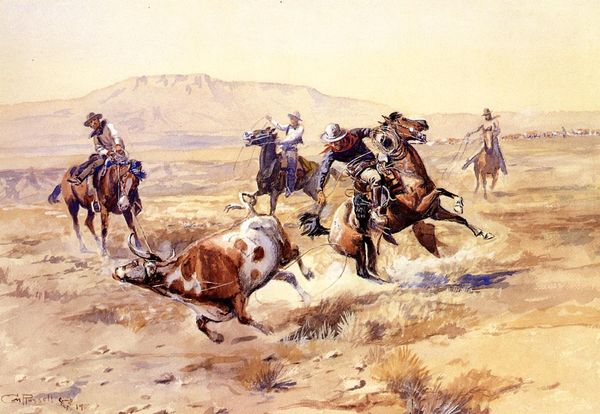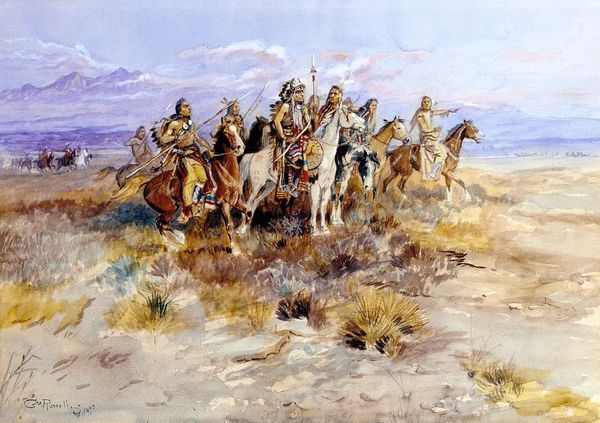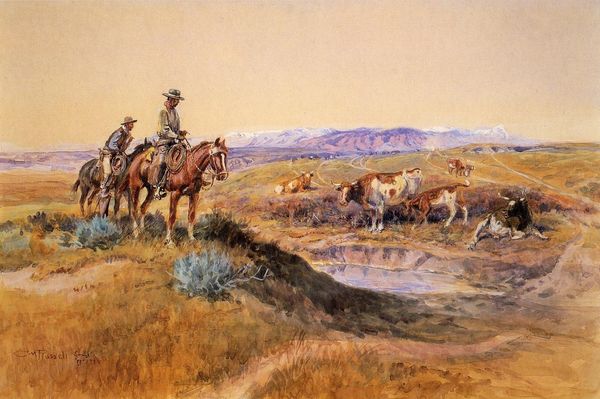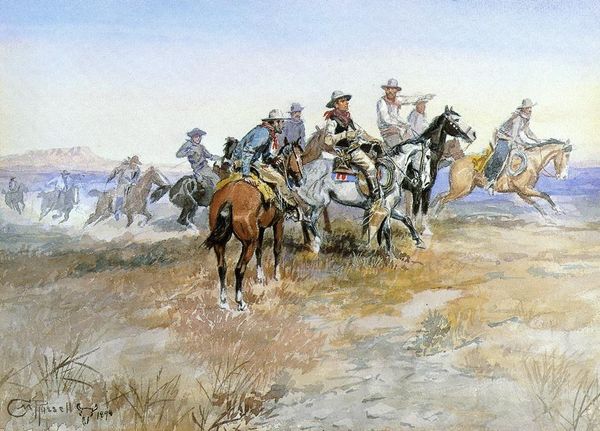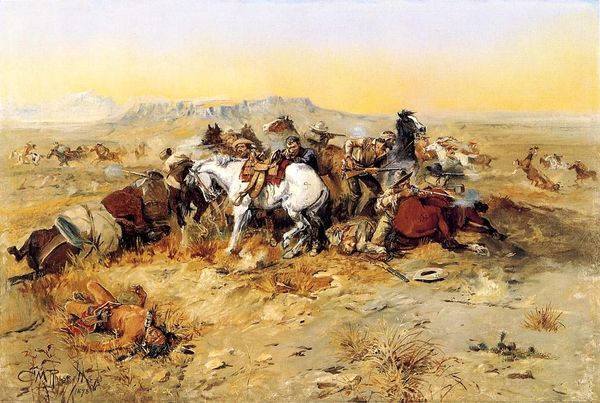
Copyright: Public domain
Editor: We’re looking at Charles M. Russell's watercolor and mixed media painting, *The Alarm Bell*, created in 1898. It depicts a group of cowboys on horseback, spread across a dry landscape. What strikes me most is the implied urgency; it feels like a moment of tense anticipation. How do you interpret this work? Curator: The immediate symbol is the collective gaze – a unity of vision towards an unseen point of interest or perhaps threat. In this context, ‘alarm’ acts as both signal and sign. Observe how Russell orchestrates the line of sight, focusing our own attention and instilling a sense of shared anxiety. What does the landscape contribute to that emotional register, would you say? Editor: The muted palette, the parched earth, definitely amplifies the sense of unease. There’s nothing welcoming or serene about this West. Curator: Precisely! The West, in popular imagination, holds themes of opportunity and freedom, however, in *The Alarm Bell* the setting also becomes a source of possible danger, revealing something fundamental about the period – a collective awareness of uncertainty amidst expansion. How does that impact your understanding? Editor: It shifts my perspective. I initially focused on the romanticized vision of the cowboys, but the tension suggests a more complex narrative about life on the frontier. Curator: Yes, it isn't just about individual heroism; it evokes questions around community, survival, and an environment both bountiful and brutally unforgiving. What stays with you after considering these elements? Editor: It’s the painting’s ability to communicate a sense of shared experience, transcending the specific historical context. The fear is palpable even today. Curator: A powerful reminder that certain emotions and the symbols we use to express them, connect us across time.
Comments
No comments
Be the first to comment and join the conversation on the ultimate creative platform.
